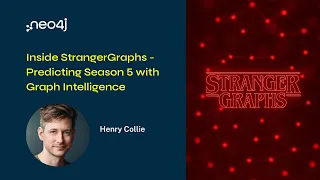Road to NODES: Mastering Retrieval-Augmented Generation with the GraphRAG Python Package
If you’re looking to supercharge your generative AI applications with more accurate, explainable, and context-aware outputs, the GraphRAG Python package by Neo4j is a game-changer. In this “Road to NODES” workshop, Neo4j experts walk you through how to combine graph database technology with Retrieval-Augmented Generation (RAG) techniques to create next-level AI experiences.
What is GraphRAG?
GraphRAG leverages the structured power of graph databases to enhance Retrieval-Augmented Generation. Traditional RAG approaches use vector similarity search to retrieve relevant context before prompting a large language model (LLM). GraphRAG extends this by enabling relationship-aware context retrieval, which greatly improves accuracy, reduces hallucinations, and increases explainability.
Learn more in the GraphAcademy course introduction.
Key Features of the neo4j-graphrag Python Package
The neo4j-graphrag Python package streamlines the development of RAG workflows backed by Neo4j. It abstracts away much of the complexity in combining LLMs with knowledge graphs.
Retrieval Strategies
The package supports multiple retrieval strategies:
- VectorRetriever – Retrieves nodes by vector similarity.
- VectorCypherRetriever – Adds contextual graph traversal to similarity retrieval.
- HybridRetriever – Combines vector search and full-text index results.
- HybridCypherRetriever – A hybrid approach with graph context awareness.
- Text2CypherRetriever – Converts natural language to Cypher queries.
Explore the full list of retrievers in the official user guide.
LLM Integration
The package integrates seamlessly with LLM providers such as OpenAI. You can define retrieval chains where results from Neo4j form the context for the language model’s response.
Full documentation is available here.
Hands-On Workshop Highlights
This “Road to NODES” session is a fully hands-on, project-driven introduction to GraphRAG. Key takeaways include:
- Creating vector indexes and embedding pipelines in Neo4j
- Running similarity and keyword searches
- Integrating full-text search with graph traversal
- Building retrieval chains for LLM interaction
- Understanding hallucinations, prompt chaining, and explainability
You can follow along via the GraphAcademy Workshop, which includes all materials used in the session.
Further Learning
To keep building, check out these additional resources:
- GraphAcademy Course: GenAI with GraphRAG
- Neo4j Developer Blog: Getting Started with GraphRAG
- GraphRAG Python Docs
By bridging structured graph data with generative AI, GraphRAG empowers developers to deliver more intelligent, traceable, and useful responses. Whether you’re building internal assistants, customer support bots, or knowledge-driven agents, this toolkit can significantly raise the bar.
Start exploring today and master the future of AI with GraphRAG.


